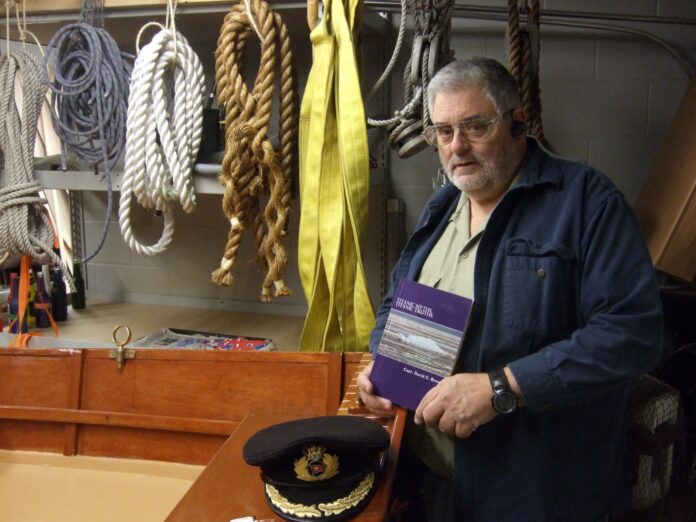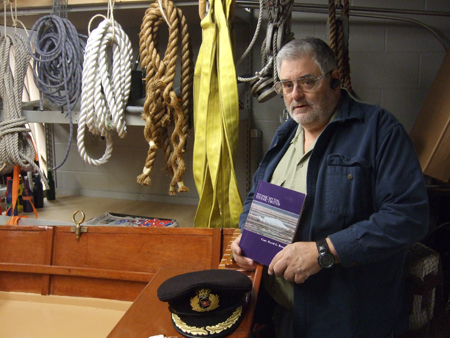
What really happened the night Titanic went down? That question has become a passion for Northwest Ohio resident David Brown, whose research has led him to believe many of the traditional accounts of the unsinkable ship’s fateful wreck are wrong.
Brown, who lives in Port Clinton and teaches boat building at the Maritime Academy of Toledo, is releasing his second book about the disaster, titled “Titanic Myths, Titanic Truths.”
A licensed captain who has sailed all five Great Lakes, Brown also operated the Maumee River Water Taxi with a friend for about a decade. His interest in Titanic was piqued when he saw something in filmmaker James Cameron’s treatment of the disaster that didn’t seem right.
“I got into Titanic when I saw the scene where it strikes the iceberg in Cameron’s original version of the movie,” he said. “Bluntly, it’s impossible for a ship to do what was depicted in the movie and in most books and in most of the TV documentaries.”
Brown’s first book on the unsinkable ship, “The Last Log of the Titanic,” was published in 2000. He said he considers that book “a very good effort for when it was written,” but it has become dated as Titanic scholarship has advanced.
“I’m very proud of that book, but time has passed,” he said.
For his new book, Brown said, he sat down and tried to figure out what it would take for every single statement Titanic survivors made in their testimonies to be true.
“What I’ve come to realize is that the classic version of the accident is not even close to what happened, nor could it be,” he said.
Brown said he’s no conspiracy theorist. There are any number of people with elaborate theories about the sinking — including one author who argued the doomed vessel was actually Titanic’s sister ship, sunk as part of an insurance scam — but Brown doesn’t buy into those.
The surviving crew members likely told the version of the story that was in their own best interests, he said.
Brown said the evidence suggests Capt. Edward Smith had been maneuvering the ship south in small increments to avoid ice, which ultimately was what placed the fatal iceberg in Titanic’s path. The conventional story of the ship scraping the iceberg while trying to pull away, he said, is physically impossible — as plausible as it might seem to someone who’s used to driving a car, not steering a ship.
“It’s a physical impossibility for them to have scraped the starboard bow while turning left,” he said.
In fact, Brown said, by the time the officer in charge of the bridge realized the iceberg was upon them, the only reasonable option was to accept the ship would strike it. Rather than steering from the front like a car, he said, a ship pivots around a point, and trying to move away from the iceberg at that point would only have worsened the damage.
Brown said he suspects even in 1912, with the automobile age in its infancy, most people’s land-based experience would lead them to see failing to pull away from the iceberg as foolish. That, he said, may be why some survivors described events the way they did.
“It didn’t sound logical,” he said. “Why would you deliberately run into something? But sailors are taught to take a glancing blow.”
Brown also theorizes that one of the biggest errors after the strike was engineers trying to start a bilge pump and mistakenly opening the wrong valve, letting water come rushing into boiler room No. 5.
The cause of this fatal mistake? Brown hypothesizes that when one of the engineers was injured and his superiors tried to help him, the result was the command structure falling apart.
As with many accidents, he said, there was no single cause that led to the deaths of more than 1,500 people.
“When two cars collide, 90 percent of the time both drivers had opportunities to avoid that accident and didn’t take them,” he said.
If the same thing had happened to the same ship as little as a decade later, Brown said, it probably would have ended differently — because the ship’s crew would likely have included many war veterans with firsthand knowledge of damage control.
“If Titanic had struck an iceberg after World War I, the engineers would have saved it,” he said.























